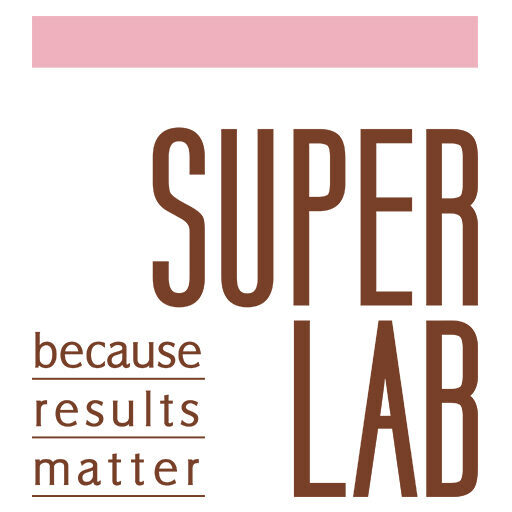
Health Food Efficacy Experiment
According to the health food control regulations by the Food and Drug Administration (FDA), there are 13 types of health food products that can be declared effective. Based on the efficacy ingredients in the product, we can custom design efficacy experiments for various health foods. This test can help clients in understanding the product.
The low-cost and simple pilot study can help clients to understand product features and reduce the costs and risks of developing new products and applying for the designation of “health food.”
After the pre-screening test, the effective dose can be introduced into the formal test and tested according to each assessment method to increase the chances of a successful experiment. SuperLab is the only private testing firm in Taiwan that can independently perform most functional or efficacy tests.
Evaluation of Hepatoprotective Efficacy of Health Food
Objective: To evaluate the test article
-
- Whether it helps the effect of reducing carbon tetrachloride (CCl4)-induced chemical liver injuries
- Whether it helps the effect of reducing N-acetyl-p-aminophenol (APAP)-induced chemical liver injuries
- Whether it helps the effect of reducing thioacetamide (TAA)-induced liver fibrosis
- Whether it helps the effect of reducing alcohol diet-induced fatty liver
- Whether it helps the effect of reducing high-fat diet-induced fatty liver
or reduces its risk factors
Test methods:
Different causes of the liver disease occur in vary degrees of lesion or injury. The five different methods (carbon tetrachloride, acenaphthene phenol, thioacetamide, alcoholic liquid feed, high-fat diet) induced liver lesions in animal models are tested. If the food can reduce the risk of disease and declare its effectiveness, it should indicate the method of induction and pathological changes in order to distinguish the difference. For details, please refer to the relevant laws and regulations.
Evaluation of Anti-Obesity Efficacy of Health Food
Objective: To evaluate the test article of anti-obesity effect
Test methods: Clinical Trials
Body measurement, bioelectrical impedance analysis (BIA), body density measurement, imaging system assay, food safety assessment
Test methods: Animal Study
First induce animal obesity model, induce animal obesity at the same time model, body fat measurement indicators and methods, food safety assessment
Evaluation of Bone Protection Efficacy of Health Food
Objective: To evaluate the test article
whether it helps to promote bone development.
whether it helps to delay the bone loss.
whether it helps to reduce the factor of osteoporosis.
Test methods:
Bone density, trabecular bone measurement (μ-CT), trabecular mineral apposition rate (MAR), analysis of biomechanics, metabolic and biochemical markers of osteoblast and osteoclast
Evaluation of Blood Lipid-Lowering Efficacy of Health Food
Objective: To evaluate the test article
- Whether it helps reduce serum cholesterol content
- Whether it helps reduce serum oxidation of low-density lipoprotein
- Whether it helps reduce serum oxidation of triglyceride
- Whether it helps reduce the risk of developing cardiovascular disease or atherosclerosis
Test methods: Clinical Trials
Detection of serum TC, TG, HDL-C, LDL-C, ratio of LDLC/HDL-C, lag phase of LDL oxidation
Test methods: Animal Study
Test of improving, test of preventing, serum TC, TG, HDL-C, LDL-C ratio of LDLC/HDL-C, fecal TC, fecal TG, liver TC, liver TG, lag phase of LDL oxidation
Evaluation of Blood Glucose Regulation Efficacy of Health Food
Objective: To evaluate whether the test substance helps to regulate blood glucose levels
Test methods: Clinical Trials
- Fasting blood glucose
- Glucose tolerance
- Hemoglobin A1c
- Biochemistry test
Test methods: Animal Study
Fasting blood glucose, glucose tolerance, biochemistry test
Evaluation of Modulatory of the Body Allergy with Health Food
Objective: To evaluate whether the test article helps to modulate the body allergy
Test methods: Human Subject Research
- Allergic immune response index: determination total IgE antibody and allergen-specific IgE antibody, allergen-specific proliferation, allergen-specific cytokines, isolation and culture monocyte from peripheral blood, analysis inflammatory media, counting the inflammatory cell number
- Clinical symptoms assessment: pulmonary function tests, rhinitis, atopic dermatitis, subject self-assessment and physician evaluation
Test methods: Animal Tests
Nature killer cell activity, phagocytosis activity, concentration of antibody in the blood, proliferation of splenocyte or lymphocyte, cytokines secretion test, analysis of the bronchoalveolar lavage fluid, pulmonary function or other allergic related index.
The Evaluation of Anti-fatigue Efficacy of Health Food
Objective: To evaluate whether the test article helps to reduce fatigue effect or anti-fatigue effect
Test methods: Clinical Trials
maximal oxygen uptake(VO2 max), exercise capacity, endurance exercise, physiological analysis, blood biochemical analysis
Test methods: Animal Study
Exercise capacity, urea nitrogen determination, glycogen determination, lactate determination
Evaluation of Gastrointestinal Improvement Efficacy of Health Food
Objective: To evaluate the test article
- Whether it helps to promote the intestinal digestion and absorption
- Whether it helps to improve the intestinal microflora
- Whether it helps to improve the gastrointestinal motility and maintain the normal function
- Whether it helps to increase the gastroprotective efficacy and maintain the normal function
- Whether it helps to reduce the number of gastric helicobacter pylori
Test methods:
According to the product characteristics, there are 5 methods for evaluating the efficacy of health food. For details, please refer to the relevant laws and regulations.
- Promoting the intestinal digestion and absorption
- Proving the intestinal microflora
- Improving gastrointestinal motility and maintaining the normal function of gastroprotective efficacy
- Increasing the protection of gastric mucosa and maintaining intestinal normal function
- Reducing the number of gastric helicobacter pylori
The evaluation of increasing the immunomodulatory efficacy of health food
Objective: To evaluate the test article whether it helps to increase the immunomodulatory efficacy.
Test methods: Human Subject Research
- Non-specific immune response: reaction of monocyte in peripheral blood, antibody, cytokines, nature killer cell activity, phagocytosis activity, analysis CD marker on monocyte in peripheral blood
- Specific immune response: Tetanus toxoid (TT), production of TT-induced specific antibody, TT-specific T cell proliferation, production of TT-specific cytokines
Test methods: Animal Tests
- Non-specific immune response: proliferation of splenocyte or lymphocyte, antibody, cytokines, nature killer cell activity, phagocytosis activity, analysis CD marker on splenocyte
- Specific immune response: ovalbumin (OVA), production of OVA-induced specific antibody, OVA-specific T cell proliferation, production of OVA-specific cytokines


You must be logged in to post a comment.